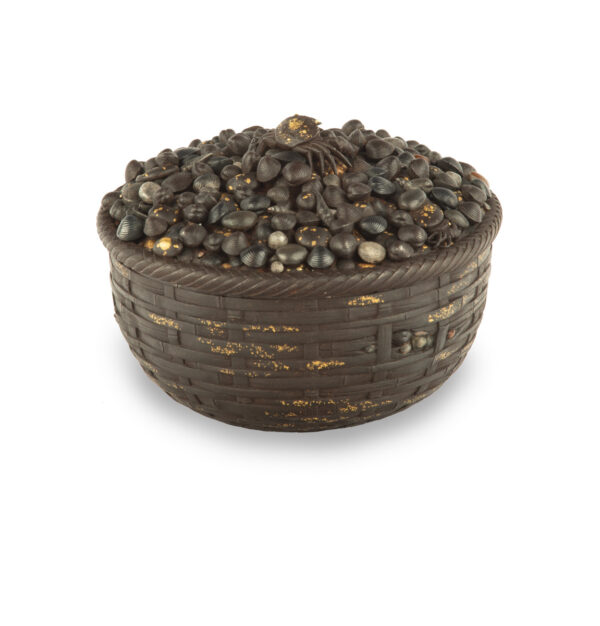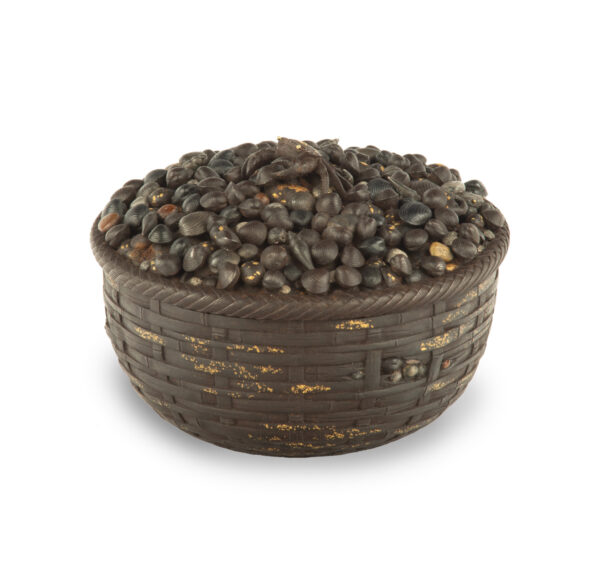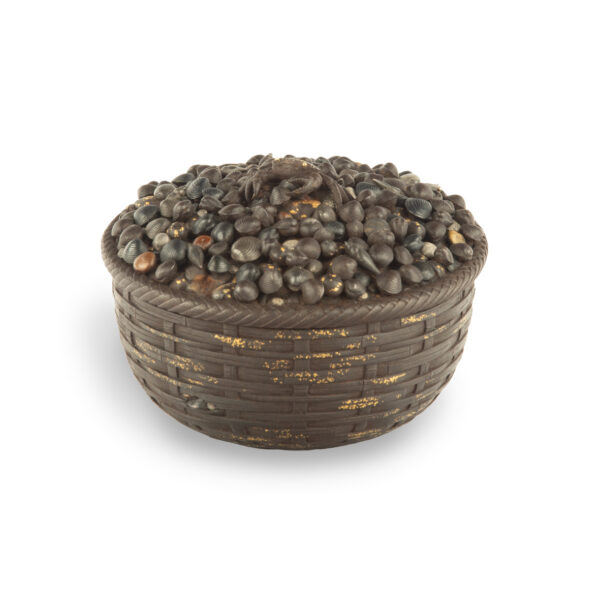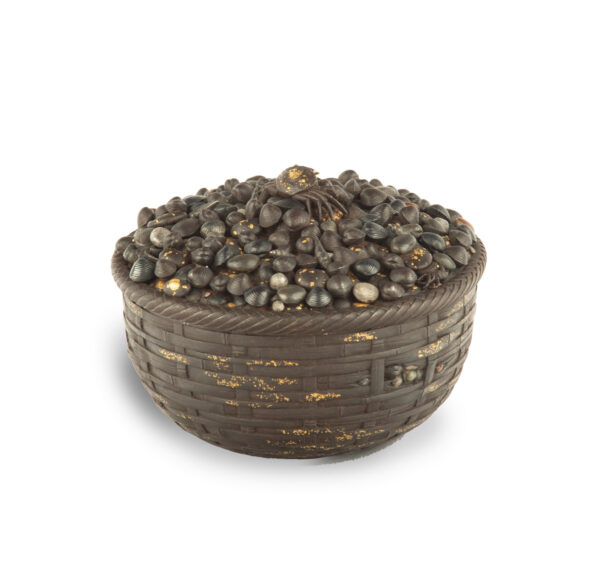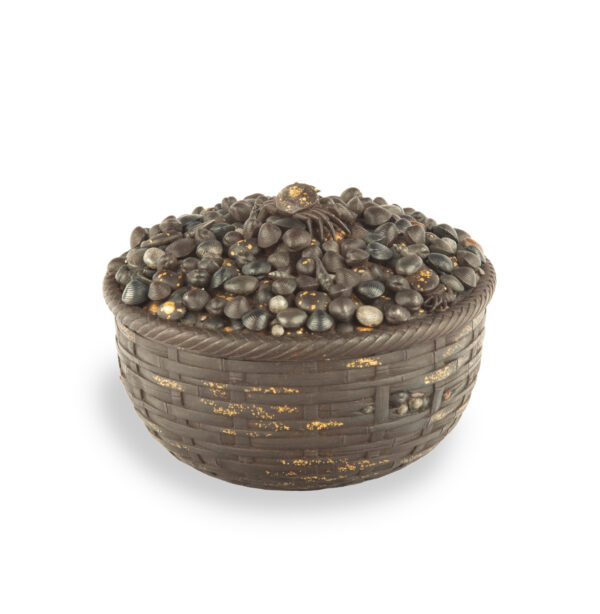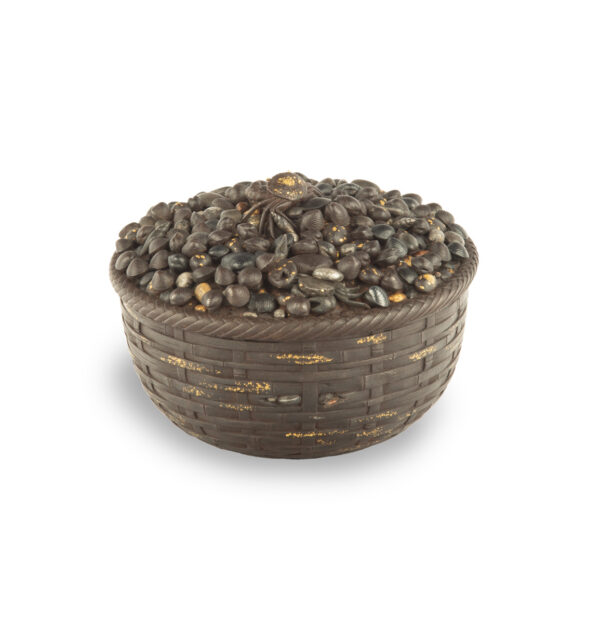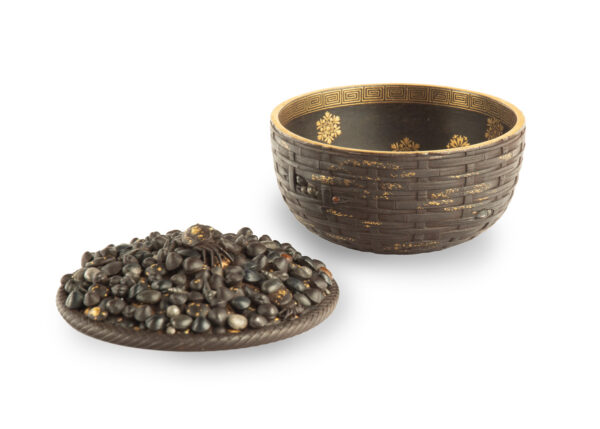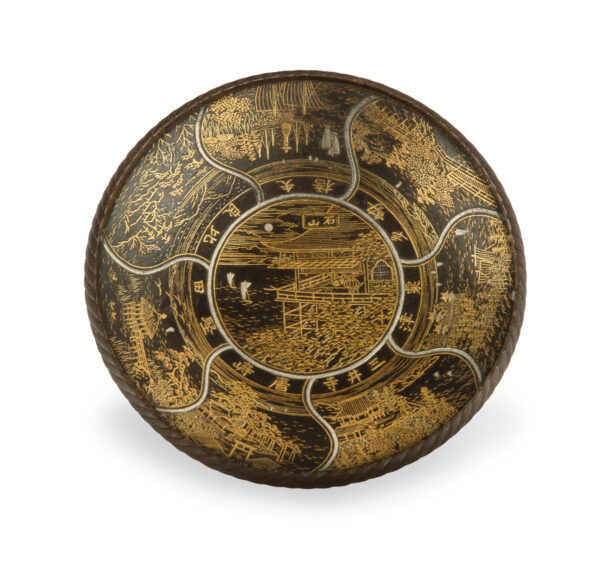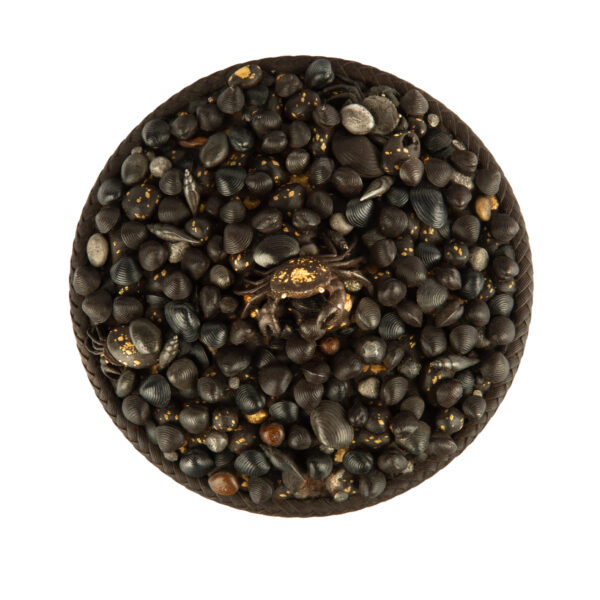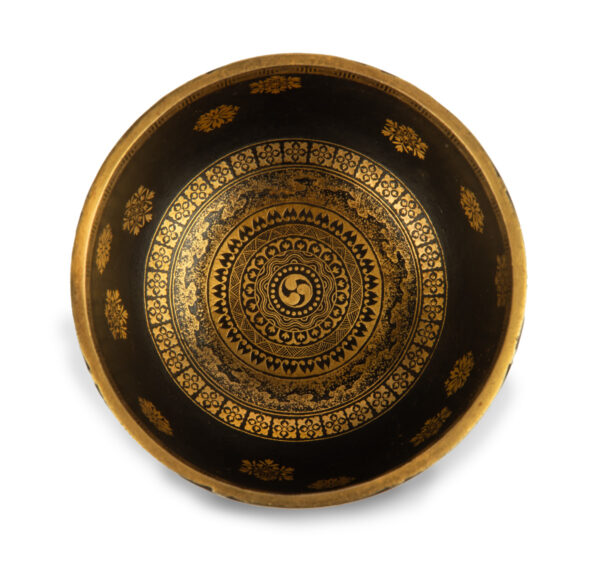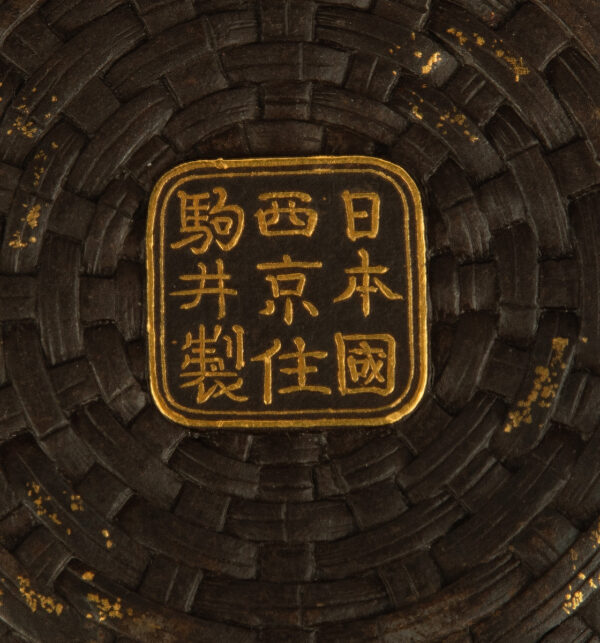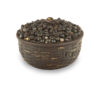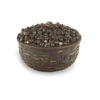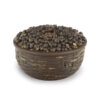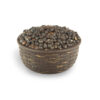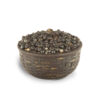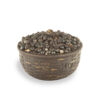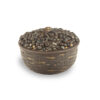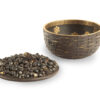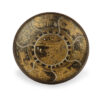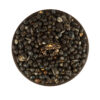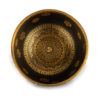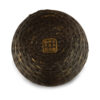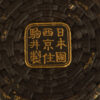As part of our Japanese works of art collection we are delighted to offer this incredibly rare Meiji Period (1868-1912) iron and mixed metal lidded box, manufactured by the highly regarded Komai company of Kyoto during the latter part of the 19th century. This magnificent box is primarily crafted from gilt decorated iron in the form of a fishermans wicker basket, the hand woven basket apparently bulging with shells as can be seen from the gaps in the main body, the lid to this basket is decorated with various shells, pebbles, crustaceans and crabs formed from a multitude of mixed alloys, predominatly iron , shakudo and shibuichi as well as silver and copper, with many of the shells splashed in gold to give the impression of algae. Upon removing the lid from this box you are captivated by the outstanding gilt decoration to the interior of the bowl, whilst the inner lid reveals the scenes of famous temples and places of interest in Kyoto, more often seen on large examples of Komai products, only this time fashioned in miniature with each segmented scene titled in fine script. The underside of this remarkable vessel carries the full signature seal of the famous Komai company reading as ; Dai Nihon Kyōto no jū Komai sei. Was it a special commision or destined for exhibition, we may never know , what we can say with a degree of certainty is that it is likely to be a unique example manufactured at the pinnacle of production under the stewardship of Komai Otojiro I, during the final decade of the 19th century.
Literature :
One of the most characteristic and desirable types of Meiji Period metalwork is that of the Komai family of Kyoto, whose highly detailed damascened work is quite distinctive. The Komai Company was originally founded in 1841 by Komai Seibi, but it was only when Komai Otojiro I became head, in 1865, that the company began to make the wares for which they were to become so famous. The workshop, under the leadership of Komai Otojiro specialised in intricate inlaid work of gold and silver into iron. The technique favoured by the workshop was kinsujizogan the inlay of strips of gold or silver into engraved lines on the iron body, later they were to use nunomezogan which involves the inlay of thin sheets of gold or silver onto a roughened ground. In a promotional brochure of about 1915, Komai Otojiro II (Otojiro I retired in 1906) called his workshop the ‘pioneer of damascene work’, inevitably during the early 20th century the company increased production to cater for the significant emerging tourist market, with most of their wares now lacquered in black upon a rough surface and predominatly damascened with famous scenes of Japan.
Provenance :
Long standing European collection.
SSJA Autumn 2024 Exhibition Catalogue -Plate 9
Condition report :
Superb age related condition.
Approximate Sizes :
Diameter : 3 1/8″ 8 cm
Height : 2 3/8″ 6 cm
Free worldwide delivery and a certificate of authenticity are included within the price of this item. EP86
